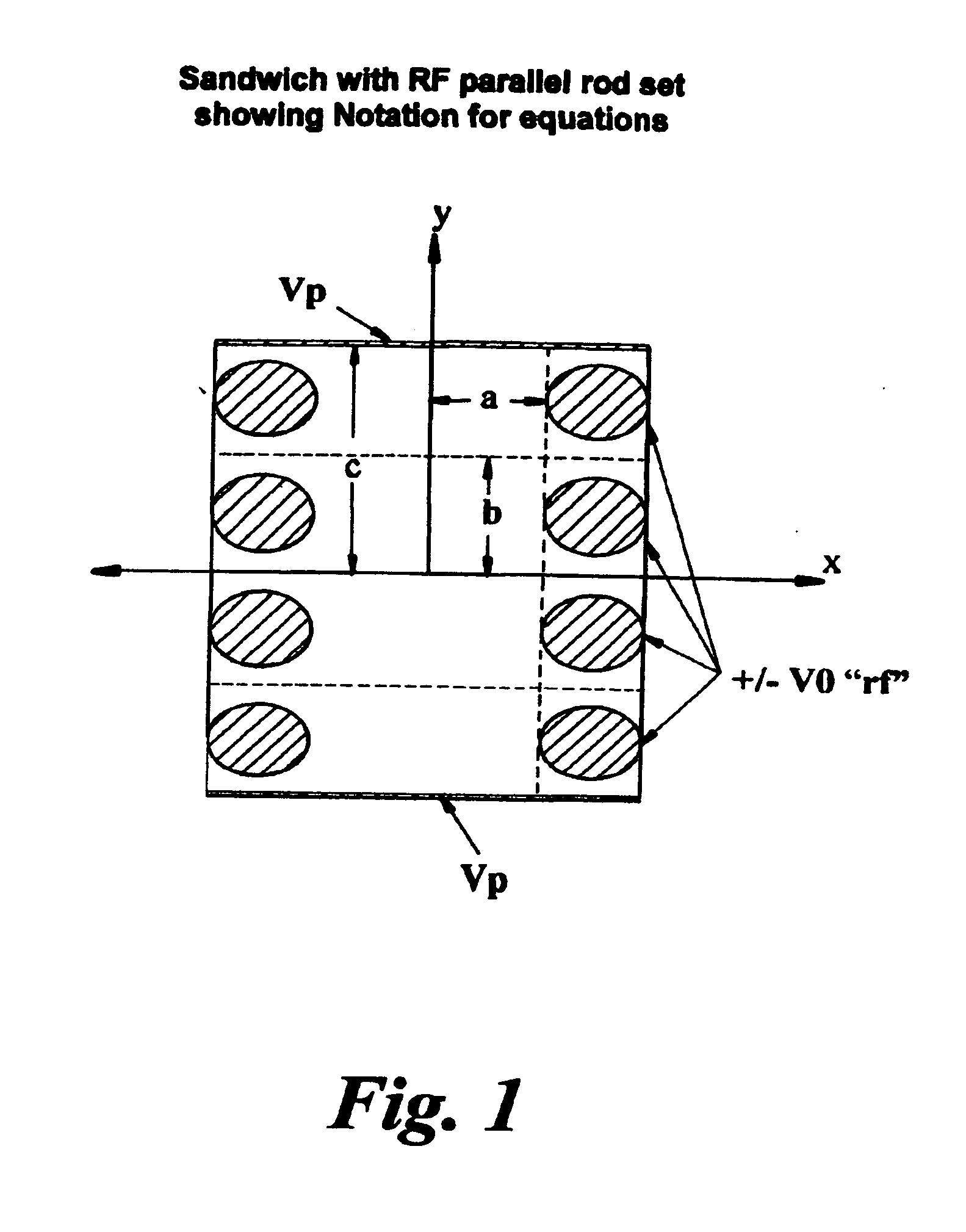Ion extraction devices, mass spectrometer devices, and methods of selectively extracting ions and performing mass spectrometry
a mass spectrometer and ion extraction technology, applied in the field of analytical devices, can solve the problems of loss of sensitivity, difficult to exploit the behaviour of scanning mass spectrometers, and difficult to predict the deterministic analysis of separation
- Summary
- Abstract
- Description
- Claims
- Application Information
AI Technical Summary
Benefits of technology
Problems solved by technology
Method used
Image
Examples
Embodiment Construction
[0183] The general form of the effective potential (both from rf and electrostatic source) is derived using the adiabatic approximation [Gerlich, ibid] and is given by Veff(Ro):=q2·Eo24·M·Ω2+q·Φ[equation 1]
where R0 is the slowly varying position of an ion, q is its charge, E0 is the magnitude of the oscillatory electric field of angular frequency Ω at position R0 and M is its mass. The equation also includes the classical electrostatic potential qøs where øs is a voltage created by DC potentials applied to electrodes in any general system. It can be seen that the potential due to the oscillatory field is proportional to charge squared while the electrostatic potential is proportional to charge. The present invention exploits this relationship to separate ions of similar mass but differing charge.
[0184] The form of the effective potential from an oscillatory field in quadrupoles, hexapoles, octopoles etc has been calculated by Gerlich and is of the form: V(r):=n2·q2·Vo24·M...
PUM
 Login to View More
Login to View More Abstract
Description
Claims
Application Information
 Login to View More
Login to View More - R&D
- Intellectual Property
- Life Sciences
- Materials
- Tech Scout
- Unparalleled Data Quality
- Higher Quality Content
- 60% Fewer Hallucinations
Browse by: Latest US Patents, China's latest patents, Technical Efficacy Thesaurus, Application Domain, Technology Topic, Popular Technical Reports.
© 2025 PatSnap. All rights reserved.Legal|Privacy policy|Modern Slavery Act Transparency Statement|Sitemap|About US| Contact US: help@patsnap.com



